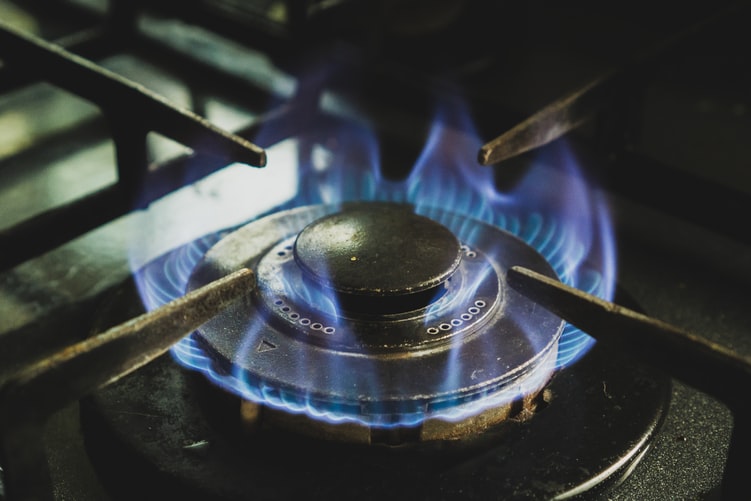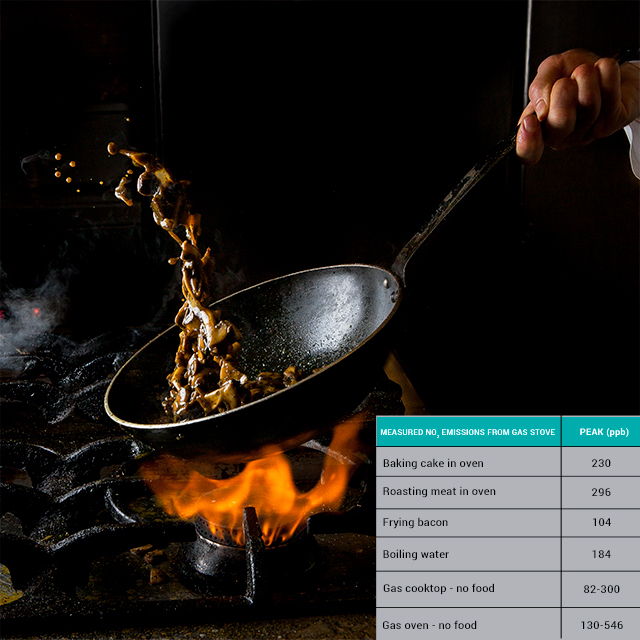Who doesn’t love to grab a bite! Even the bare sight of, no, the thought of delicious food is enough to make us drool. However, we know very little of the havoc those gas stoves in our kitchens create. Yes. Gas stove emissions are responsible for indoor air pollution. Read more to find out about gas stove pollution.
There is an obscure understanding of the extent of the impact that gas stove emissions cause. We bet you would have never imagined it as the prime accuse of the deterioration in the indoor air quality of your kitchen and your home. However, reality bites you hard. The seemingly harmless and invisible fumes from your kitchen apparatus initiate a rigmarole that is bound to make your health pay in the longer run.
Electric cooking has gained popularity over the last few years. Many people are turning to this method rather than conventional methods. Cooking via direct combustion causes more pollution than electric cooking. Gas stove emissions are responsible for the addition of many air pollutants to the indoor air. If you don’t manage the emissions properly, these pollutants can prove to be detrimental for you as well as your loved ones. This statement especially holds for the middle- and low-income countries that are still highly dependent on solid fuels for making food. Thus, it is the main reason why respiratory problems are more common in the developing world.
What’s so harmful about gas stove emissions?

Heating of edibles stirs up the release of tiny aerosol particles called particulates that can be non-breathable (size up to 2.5 microns) or breathable (<2.5 microns) in nature. These ultra-fine particles exacerbate indoor air pollution and disrupt the optimal conditions of your indoor environment. Throw-in the vehement aromas of certain condiments to the mix, and you are up for a malicious experience. According to a study, cooking by combustion of fuel releases around twice the amount of PM2.5 than electric cooking.
Is that all?
Unfortunately, no.
Gas stove emissions also include carbon monoxide (CO), nitrogen dioxide (NO2), and formaldehyde (HCHO). All these factors constitute a prime risk in the form of indoor air pollution. Honestly, indoor air pollution is not less than a silent pandemic that the world has been facing, much before COVID-19 incepted.
Combustion produces carbon dioxide. Incomplete combustion of the fuel gas leads to the release of carbon monoxide. CO is vicious! Beyond the threshold levels, this odorless and colorless gas causes headaches, dizziness, fatigue, disorientation, and eventually, death. The gas stove is the only common indoor source of CO. Usual cooking procedure do not lead to the formation of CO. However, circumstances like inadequate ventilation, issues/obstruction in gas supply increases the risk of CO poisoning in the kitchen. It can make occupants vulnerable to severe acute health ailments. Moreover, prolonged exposure to even lower concentrations of CO can make things worse for patients with cardiovascular illness and other high-risk groups.
Average indoor CO levels of a household are between 0.5 to 5 parts per million (ppm). The usage of a gas stove elevates these levels from around 5 to 15 ppm, whereas poorly adjusted stoves push these to twice the values (30 ppm or more). Acute symptoms start appearing at a concentration above 70 ppm.
And what about NO2 ?
Then, there is NO2. NO2 is one of the most prominent outdoor pollutants. It exacerbates respiratory disorders, particularly in children. According to research in 2013, every 5 ppb rise in NO2 levels due to gas stove use in the kitchen, above the threshold value of 6 ppb, accounts for a significant increase in wheezing and asthma cases.

Gas stoves can release abundant concentration of nitrogen dioxide. (RMI)
Moreover, long-term exposure to NO2 is linked to diabetes, premature mortality, lower birth-weight, cardiovascular effects, and even cancer. If you think that is all, then you are wrong. NO2 exposure even affects the neuropsychology of children and result in their cognitive under-performance during the later years of life. Nonetheless, even low levels of NO2 from gas stoves are hazardous, especially to the sick and the vulnerable. Homes with gas stoves have 2-200 times the NO2 concentrations as compared to the homes having electric stoves. And this is worrisome.
Conclusion
Therefore, it is well-established that we need to be cautious while using gas stoves at our homes. Even ‘cleaner’ fuels are not so clean after all and are bound to release contaminants in the air.
You can lessen the indoor air pollution by gas stove emissions by ensuring adequate ventilation in your kitchen. It allows the diffusion of ambient air and thus the dilution of indoor air pollutants. Install an exhaust and switch it on while you’re exploring your culinary skills, or keep windows (if any) in your kitchen open at that time.
Also, keep checking for any leakage in the pipeline of the gas stove and repair it on an immediate basis. Turn off the knob of your stove properly. Perhaps your accidental callousness could result in an indoor air crisis. So make sure you don’t leave the burner on.
Monitoring of indoor air pollutants can also be vital to control their concentrations effectively.
Bon Appetite!